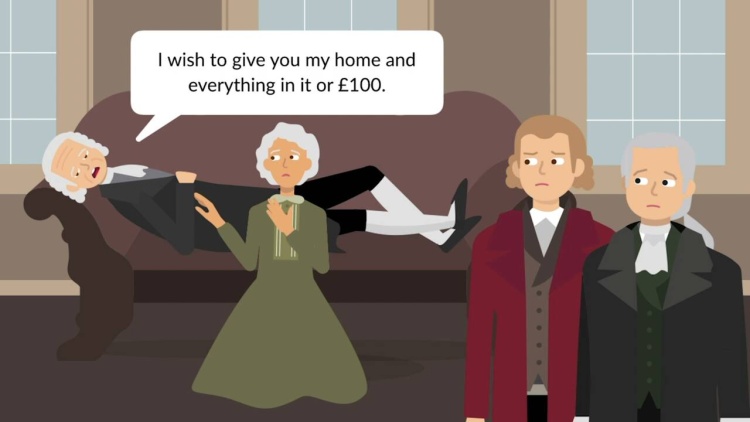Thomas v. Thomas
Queen’s Bench
114 Eng.Rep. 330, 2 Q.B. 851 (1842)
- Written by Megan Petersen, JD
Facts
John Thomas (John), the deceased husband of Eleanor Thomas (Eleanor) (plaintiff), owned seven houses. In his will, he transferred ownership of those houses and his other assets to Samuel Thomas (Samuel) (defendant), his brother. The will also made provisions for certain expenses for John’s wife, Eleanor. The evening before his death, John also stated in front of two witnesses that he wanted Eleanor to be permitted to live in one of the houses he was transferring to Samuel. After John died, Samuel and Eleanor drafted a written agreement in which Samuel expressed his desire to fulfill his brother John’s wish of permitting Eleanor to live in one of his houses. Although this desire to fulfill John’s wish was stated as the primary purpose of the agreement, the final part of the agreement provided that Eleanor would furnish one pound annually to Samuel and would agree to make necessary repairs to the house in exchange for living there. The agreement was carried out as written for several years, until Samuel died. His executors refused to continue the agreement with Eleanor and brought an action for ejectment against her. Eleanor sued the executors of Samuel’s estate for enforcement of the contract. The trial judge ruled in favor of Eleanor and upheld the contract, and the executors appealed.
Rule of Law
Issue
Holding and Reasoning (Lord Denman, C.J.)
Concurrence (Patteson, J.)
Concurrence (Coleridge, J.)
What to do next…
Here's why 899,000 law students have relied on our case briefs:
- Written by law professors and practitioners, not other law students. 47,000 briefs, keyed to 994 casebooks. Top-notch customer support.
- The right amount of information, includes the facts, issues, rule of law, holding and reasoning, and any concurrences and dissents.
- Access in your classes, works on your mobile and tablet. Massive library of related video lessons and high quality multiple-choice questions.
- Easy to use, uniform format for every case brief. Written in plain English, not in legalese. Our briefs summarize and simplify; they don’t just repeat the court’s language.





